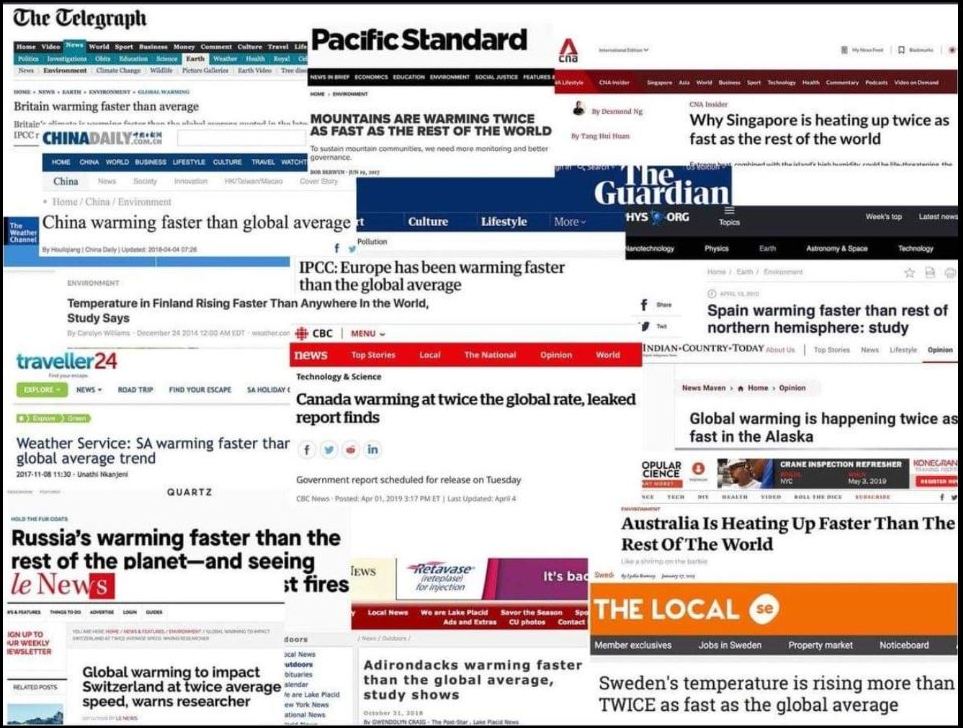|
|
Post by walnut on Jan 17, 2022 14:51:31 GMT
Even by NSIDC measurement arctic sea ice is right at the 2001-2010 average. And only 3.8% below the 1981-2010 average.
|
|
|
|
Post by Sigurdur on Jan 21, 2022 18:20:27 GMT
|
|
|
|
Post by missouriboy on Jan 21, 2022 20:49:16 GMT
Cool. Did you notice the caged guard with the mask?  |
|
|
|
Post by Sigurdur on Jan 23, 2022 0:28:02 GMT
|
|
|
|
Post by ratty on Jan 23, 2022 3:42:05 GMT
'Pronounced melting' and 'sea ice loss'? The words 'previous' or 'historic' should be in there somewhere. |
|
|
|
Post by neilhamp on Jan 23, 2022 8:10:51 GMT
Thanks for this Sig,
"The internal variability contribution to recent upper Arctic Ocean warming accounts for up to one quarter of warming over the past four decades and up to 60% of warming from 2000 to 2018. This suggests that climate models need to replicate this important internal process in order to realistically simulate Arctic Ocean temperature variability and trends."
I believe the so called "Internal Variability" is the AMO which should start its downward trend in the next few years.
|
|
|
|
Post by Sigurdur on Jan 25, 2022 11:52:31 GMT
|
|
|
|
Post by neilhamp on Jan 25, 2022 19:33:56 GMT
The position of the sea ice extent above the minimum has risen from 7th lowest in January 2021 to 16th lowest in January 2022. The sea ice extent compared to the average for the decade from 2010 to 2019 is shown in the last two columns. Just updated the January data to include current situation for Jan.31st. 2022. The sea ice extent has exceeded the 2010's average since August 2021. Will this trend continue through 2022?| Date | Position | Position | Difference from 2010's | Difference from 2010's |
| 2021 | 2022 | 2021 | 2022 | | January 31st. | 7th. | 16th. | +79,452 sq.km. | +333,064 sq.km. |
|
|
|
|
Post by ratty on Jan 26, 2022 1:12:59 GMT
The position of the sea ice extent above the minimum has risen from 7th lowest in January 2021 to 15th lowest in January 2022 (so far). The sea ice extent compared to the average for the decade from 2010 to 2019 is shown in the last two columns. Just updated the January data to include current situation for Jan.25th 2022. The sea ice extent has exceeded the 2010's average for six successive months. Will this trend continue through 2022?
[ Snip ] Probably and all this happening while the Arctic is warming twice as fast as anywhere else.  |
|
|
|
Post by missouriboy on Jan 26, 2022 3:16:33 GMT
The position of the sea ice extent above the minimum has risen from 7th lowest in January 2021 to 15th lowest in January 2022 (so far). The sea ice extent compared to the average for the decade from 2010 to 2019 is shown in the last two columns. Just updated the January data to include current situation for Jan.25th 2022. The sea ice extent has exceeded the 2010's average for six successive months. Will this trend continue through 2022?
[ Snip ] Probably and all this happening while the Arctic is warming twice as fast as anywhere else.  Weather and climate are sooooooooo settled.  |
|
|
|
Post by walnut on Jan 26, 2022 4:38:58 GMT
Sea ice extent is hard to watch, intra-year trends can change so suddenly.
|
|
|
|
Post by nonentropic on Jan 26, 2022 4:40:32 GMT
the conclusion is that it is now cooling twice as fast as the other places.
You live by the sword you die by the sword.
|
|
|
|
Post by ratty on Jan 26, 2022 5:06:18 GMT
Time for a re-run ...  |
|
|
|
Post by walnut on Jan 26, 2022 5:51:17 GMT
That was all just random, baseless noise, wasn't it? The damage that has been done to our confidence in science... |
|
|
|
Post by walnut on Jan 26, 2022 5:53:32 GMT
"With vaccine booster intervals becoming shorter and shorter, I envisage a time when we will need to wheel around a hospital style intravenous drip, just to keep up."
Ratty your tag line reminds me of that joke that we Americans leave a McDonalds, step on a conveyor and go to another McDonalds, when traveling sometimes it seems like that.
|
|